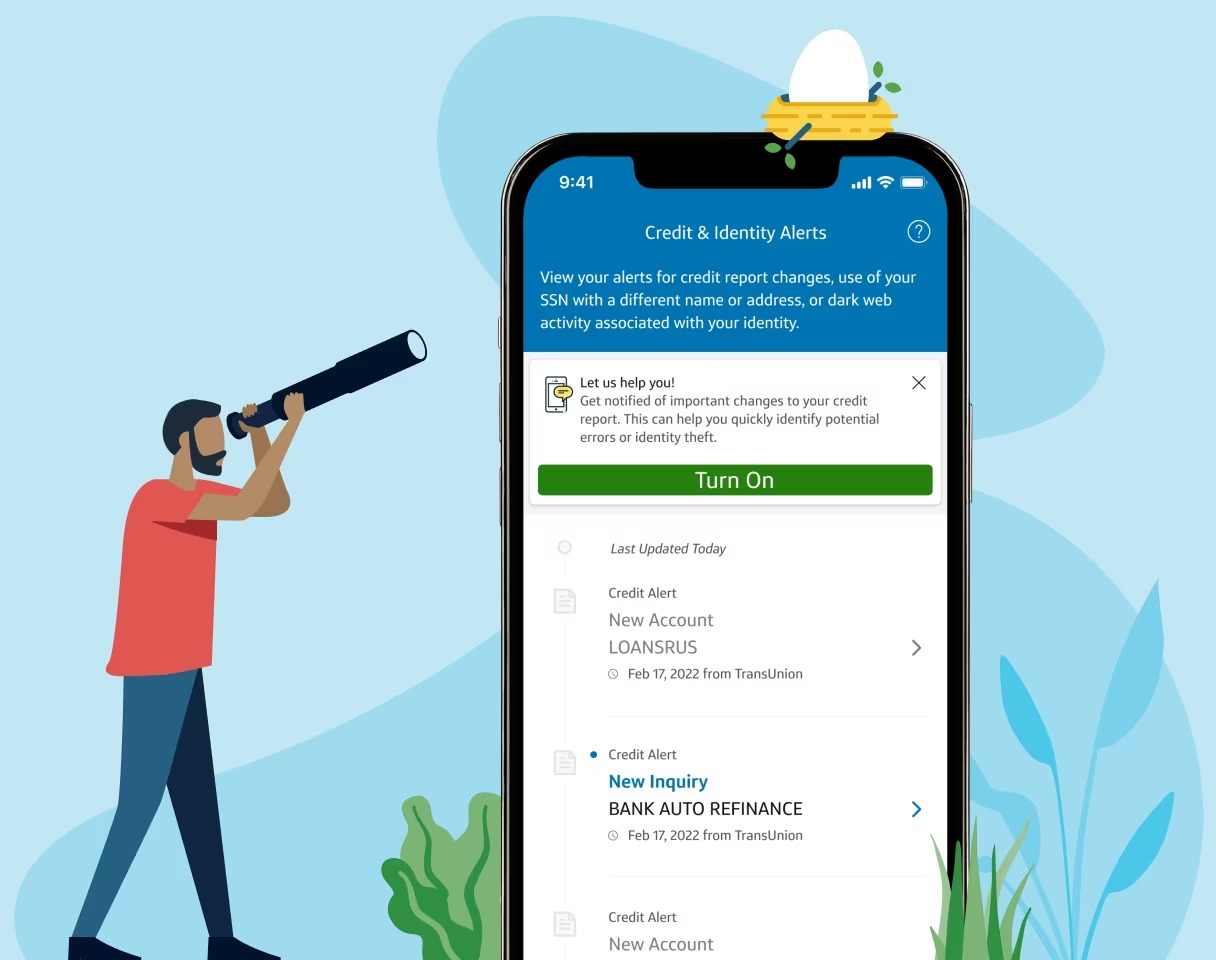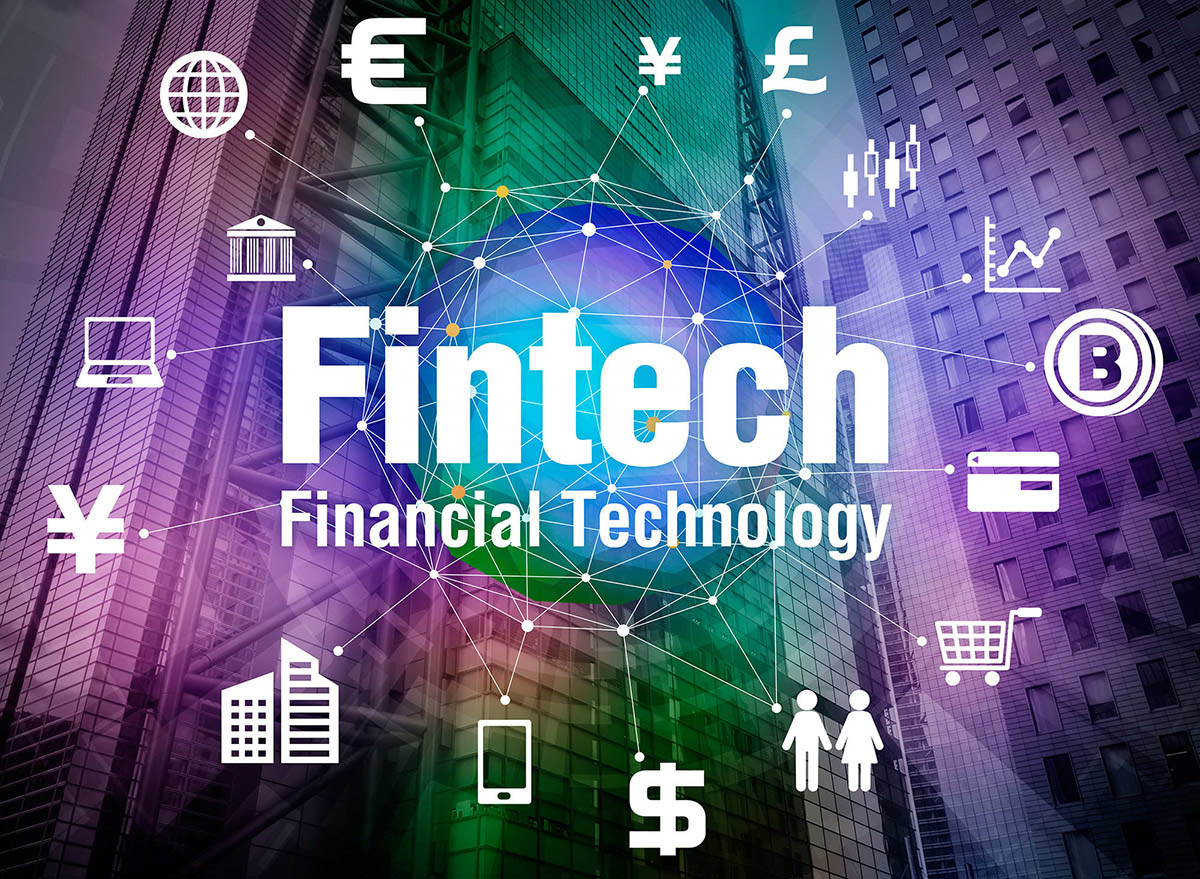

Finance
What Is Digital Banking
Published: October 13, 2023
Learn more about digital banking and its importance in the world of finance. Discover how digital technology is transforming the way we manage our money.
(Many of the links in this article redirect to a specific reviewed product. Your purchase of these products through affiliate links helps to generate commission for LiveWell, at no extra cost. Learn more)
Table of Contents
Introduction
In this digital age, technology has revolutionized almost every aspect of our daily lives, and the banking sector is no exception. Traditional brick-and-mortar banks are being replaced by digital banking solutions that offer convenience, accessibility, and a wide range of services. Digital banking has emerged as a game-changer in the financial industry, transforming how we manage our finances and conduct transactions.
Digital banking, also known as online banking or internet banking, refers to the use of electronic channels and platforms to access and carry out banking activities. It allows individuals and businesses to perform various financial tasks through mobile apps, websites, or other digital platforms without the need to visit a physical bank branch. With digital banking, customers can handle their banking needs anytime, anywhere, making it a convenient and efficient alternative to traditional banking methods.
The rise of digital banking has been fueled by several factors. First and foremost, advancements in technology have made it possible for banks to offer a seamless and secure online banking experience. The widespread adoption of smartphones and the availability of high-speed internet have also played a significant role in the growth of digital banking.
Today, customers can access a range of digital banking services, including checking account balances, transferring funds, paying bills, applying for loans, and even managing investments. The advantages offered by digital banking have led to its widespread adoption, with millions of people around the world embracing the convenience and efficiency it provides.
In the following sections, we will explore the key features of digital banking, discuss the different types of digital banking services available, delve into its evolution over the years, address the challenges and security concerns associated with digital banking, and finally, take a look at what the future holds for this transformative industry.
Definition of Digital Banking
Digital banking refers to the use of electronic channels and platforms to conduct banking activities. It involves the integration of technology and financial services, allowing individuals and businesses to manage their finances remotely without the need for physical bank branches.
With digital banking, customers can perform a wide range of financial tasks online, such as checking account balances, transferring funds, paying bills, applying for loans, and even investing. It eliminates the need for manual paperwork and reduces the reliance on traditional banking methods, offering a more efficient and convenient way to manage finances.
One of the key components of digital banking is online banking, which allows users to access their accounts and perform transactions via the internet. This can be done through a bank’s website or a mobile app specifically designed for banking services.
Another aspect of digital banking is mobile banking, which enables users to perform banking activities using their smartphones or other mobile devices. Mobile banking apps provide a user-friendly interface, allowing customers to easily navigate through various banking services and functionalities.
Furthermore, digital banking encompasses other technologies such as biometrics, artificial intelligence (AI), and cloud computing. Biometrics, such as fingerprint or facial recognition, can be used for secure authentication and access to banking services. AI technologies can provide personalized insights and recommendations to customers based on their financial behaviors and patterns. Cloud computing allows for storage and access to financial data securely from any device with an internet connection.
Overall, digital banking transforms the way individuals and businesses interact with financial institutions. It offers convenience, accessibility, and efficiency, empowering customers to manage their finances on their own terms. As technology continues to advance, the scope of digital banking is likely to expand, presenting new opportunities and challenges in the ever-evolving financial landscape.
Advantages of Digital Banking
Digital banking offers numerous advantages over traditional banking methods, making it an increasingly popular choice for individuals and businesses. Here are some key advantages of digital banking:
- Convenience: One of the biggest advantages of digital banking is the convenience it offers. With digital banking, customers can access their accounts and perform a wide range of banking transactions anytime, anywhere, as long as they have an internet connection. This eliminates the need to visit a physical bank branch during limited operating hours, saving time and effort.
- Accessibility: Digital banking breaks down geographical barriers, allowing users to access their accounts and services from anywhere in the world. Whether you’re traveling, living abroad, or simply unable to visit a bank branch, digital banking ensures that you can manage your finances without any limitations.
- 24/7 Availability: Unlike traditional banking, which operates within certain hours, digital banking services are available 24/7. This means that customers can perform transactions, check balances, and conduct other banking activities at any time, even during holidays or weekends. This flexibility is particularly beneficial for those with busy schedules or unconventional working hours.
- Improved Efficiency: Digital banking streamlines and automates various banking processes, leading to improved efficiency. Tasks such as transferring funds, paying bills, and even applying for loans can be completed quickly and seamlessly from the comfort of your own home. This not only saves time but also reduces the potential for errors or delays associated with manual processes.
- Cost Savings: With digital banking, customers can save money on various fronts. There are often no or minimal fees associated with online banking services, such as account maintenance or transaction fees. Additionally, digital banking eliminates the need for paper statements, printed checks, and physical branch visits, reducing overall operational costs for both the banks and customers.
- Enhanced Security: Digital banking platforms prioritize security and employ robust measures to protect user data and transactions. Encryption techniques, secure authentication methods, and monitoring systems help safeguard sensitive information, reducing the risk of fraud or identity theft. Many digital banking platforms also offer real-time alerts and notifications, providing an extra layer of security and peace of mind.
- Personalized Services: Digital banking platforms utilize data analytics and artificial intelligence to provide personalized services to customers. Based on user behavior and transaction history, these platforms can offer tailored recommendations, financial insights, and even customized offers. This allows customers to have a more personalized and targeted banking experience.
Overall, digital banking offers a host of advantages that cater to the needs and preferences of a modern-day customer. The convenience, accessibility, cost savings, and enhanced security make digital banking an appealing choice for individuals and businesses alike.
Key Features of Digital Banking
Digital banking is characterized by a range of features that enhance the overall banking experience for customers. These features are designed to provide convenience, accessibility, and efficiency. Here are some key features of digital banking:
- Online Account Access: Digital banking allows customers to access their bank accounts online through websites or mobile apps. This feature enables users to check their account balances, view transaction history, and manage their finances from anywhere at any time.
- Funds Transfer: Digital banking enables customers to transfer funds between their own accounts or to other beneficiaries electronically. Whether it’s a bill payment, sending money to a friend, or making recurring transfers, digital banking makes the process quick and easy.
- Bill Payment: With digital banking, customers can conveniently pay their bills online. Digital banking platforms often offer features that allow users to set up automatic bill payments, schedule payments in advance, and receive electronic receipts.
- Mobile Check Deposit: Many digital banking apps provide a mobile check deposit feature, allowing customers to deposit checks by simply taking a photo of the check using their smartphone. This eliminates the need to visit a bank branch or ATM to deposit physical checks.
- Card Management: Digital banking platforms allow users to manage their debit or credit cards easily. This includes the ability to view transactions, set spending limits, block or unblock cards, and request replacements or additional cards.
- Loan Applications: Digital banking streamlines the loan application process, allowing customers to apply for loans online. Users can submit their applications, upload necessary documents, and track the progress of their loan approvals, all within the digital banking platform.
- Investment Services: Many digital banking platforms offer investment services, allowing customers to manage and monitor their investment portfolios. This includes buying and selling stocks, mutual funds, or other securities, as well as accessing research and market insights.
- Personal Finance Tools: Digital banking platforms often provide personalized finance tools to help users manage their money effectively. These tools can include budgeting features, expense tracking, goal setting, and financial reporting to provide users with a holistic view of their financial health.
- Customer Support: Digital banking platforms typically offer customer support services through various channels such as chatbots, online chat, email, or phone. This ensures that customers can seek assistance, resolve issues, or get their questions answered in a timely manner.
These key features of digital banking contribute to its popularity and usefulness in today’s fast-paced, technology-driven world. By providing a wide range of services and functionalities, digital banking empowers customers to have greater control over their finances and banking activities.
Different Types of Digital Banking Services
Digital banking has evolved to offer a diverse range of services to cater to the ever-changing needs of customers. These services go beyond traditional banking activities and provide innovative solutions to enhance the banking experience. Here are some different types of digital banking services:
- Online Banking: Online banking allows customers to access their accounts and perform various banking activities through a bank’s website or mobile app. It includes features like checking account balances, transferring funds, paying bills, and managing account settings.
- Mobile Banking: Mobile banking services enable customers to carry out banking transactions on their mobile devices through dedicated mobile banking apps. Users can access their accounts, make payments, transfer funds, and even deposit checks using the camera on their smartphones.
- Cardless Payments: Some digital banking platforms offer cardless payment options, allowing customers to make purchases using their smartphones instead of physical debit or credit cards. This can be done through mobile wallets or near field communication (NFC) technology, which enables contactless payments.
- Digital Wallets: Digital wallets are virtual wallets that store payment card information securely. Customers can link their debit or credit cards to digital wallets and use them for online and mobile payments. Digital wallets also facilitate peer-to-peer transfers and contactless payments.
- Robo-Advisors: Robo-advisors are automated investment platforms that use algorithms and artificial intelligence to provide investment advice and manage investment portfolios. Customers can access robo-advisors through digital banking platforms to get personalized investment recommendations and automated portfolio management.
- Open Banking: Open banking is a concept that allows customers to securely share their financial data with third-party providers through Application Programming Interfaces (APIs). This enables customers to access a wider range of financial products and services offered by different providers, all within their digital banking platform.
- Biometric Authentication: Many digital banking platforms incorporate biometric authentication methods such as fingerprint scans, facial recognition, or voice recognition for secure login and transactions. Biometric authentication adds an extra layer of security by verifying the user’s unique physical characteristics.
- Contactless Payments: Contactless payments use NFC technology to enable secure and convenient transactions without the need for physical contact. Customers can make payments by simply tapping their smartphones or contactless payment-enabled cards on compatible payment terminals, reducing the need for cash or physical cards.
- Chatbots and Virtual Assistants: Digital banking platforms often employ chatbots or virtual assistants to provide automated customer support services. These AI-powered bots can assist customers with basic inquiries, account information, transaction history, and general banking guidance.
- Real-Time Alerts: Digital banking services often offer real-time alerts and notifications to keep customers informed about their account activities. These alerts can include transaction updates, payment reminders, account balance notifications, and fraud alerts, providing an added layer of security and transparency.
These different types of digital banking services cater to the diverse needs and preferences of customers, providing them with greater flexibility, convenience, and control over their financial transactions and decisions.
Evolution of Digital Banking
The evolution of digital banking can be traced back to the emergence of online banking in the late 1990s. Initially, online banking simply offered basic functionalities such as checking account balances and transferring funds through bank websites. However, over time, advancements in technology and changing customer demands transformed digital banking into the comprehensive suite of services we see today.
In the early 2000s, the proliferation of smartphones and mobile internet connectivity paved the way for mobile banking. Banks started developing dedicated mobile banking apps, offering customers the convenience of accessing their accounts and conducting transactions on the go. Mobile banking expanded the reach and accessibility of digital banking, allowing users to perform various tasks using their smartphones or tablets.
As digital banking continued to evolve, the focus shifted towards enhancing user experiences and improving functionality. Digital wallets emerged, enabling customers to store their payment card information securely and make quick and seamless payments online and at physical stores. Contactless payment technology, such as NFC, further revolutionized the way transactions are carried out, making them faster and more secure.
The rise of artificial intelligence (AI) and data analytics have also played a significant role in the evolution of digital banking. AI-powered chatbots and virtual assistants provide personalized customer support, enhancing the banking experience and delivering rapid responses to customer queries. Data analytics help banks to better understand customer behavior, offering tailored financial recommendations, and improving risk assessment.
Another significant development in digital banking is the advent of open banking. Open banking encourages banks to share customer data securely through APIs with authorized third-party providers. This enables customers to access a range of financial products and services from different providers within their digital banking platforms, fostering competition and innovation in the financial industry.
In recent years, biometric authentication methods have gained popularity in digital banking. Fingerprint scans, facial recognition, and voice recognition offer secure and convenient alternatives to traditional password-based authentication, reducing the risk of fraud and enhancing user experience.
The ongoing evolution of digital banking is driven by technological advancements and changing consumer expectations. Banks are continuously investing in cutting-edge technologies such as blockchain, Internet of Things (IoT), and machine learning to further enhance the capabilities and security of digital banking services.
As we move into the future, digital banking is expected to become even more integrated into our daily lives. The adoption of technologies like 5G networks and wearable devices will further propel digital banking, offering seamless, real-time banking experiences. It is likely that digital banking will continue to evolve, providing customers with even more personalized and convenient financial services.
Challenges and Security Concerns in Digital Banking
While digital banking offers numerous benefits, it also presents several challenges and security concerns that need to be addressed to ensure a safe and secure banking experience. Here are some of the key challenges and security concerns in digital banking:
- Cybersecurity Threats: One of the biggest concerns in digital banking is the risk of cybersecurity threats. Hackers and cybercriminals constantly devise new methods to target sensitive financial information and carry out fraudulent activities. Banks must continually strengthen their cybersecurity measures to protect customer data and prevent unauthorized access.
- Identity Theft and Fraud: Digital banking creates opportunities for identity theft and fraudulent activities. Phishing attacks, where fraudsters trick users into providing their personal and financial information, are a common method used to gain unauthorized access to accounts. Banks must educate customers about the risks of sharing sensitive information and implement robust authentication processes to prevent unauthorized transactions.
- Mobile Device Security: With the widespread use of smartphones, ensuring the security of mobile devices is crucial. Lost or stolen smartphones can potentially provide unauthorized access to banking apps and sensitive financial information. Banks must encourage customers to use strong device passwords or biometric authentication methods and provide remote wipe functionalities in case of a lost or stolen device.
- Data Privacy Concerns: As digital banking relies on the collection and storage of customer data, concerns regarding data privacy arise. Banks must comply with data protection regulations and ensure secure storage and transmission of customer information. Transparent privacy policies and consent mechanisms are necessary to build customer trust.
- Technical Glitches and Downtime: The reliance on technology in digital banking introduces the risk of technical glitches and system outages. Downtime in digital banking services can significantly impact customer experience and accessibility. Banks must invest in robust infrastructure, implement backup systems, and have effective disaster recovery plans to minimize disruptions.
- User Education and Awareness: Lack of user education and awareness about digital banking risks can make customers more vulnerable to cyber threats. Banks have a responsibility to educate customers about safe digital banking practices, such as avoiding suspicious links or sharing personal information over unsecured networks.
- Regulatory Compliance: Digital banking operates within a complex regulatory environment. Banks must stay updated with evolving regulations related to data protection, privacy, anti-money laundering, and Know Your Customer (KYC) requirements to ensure compliance and mitigate legal risks.
Addressing these challenges and security concerns requires a multi-faceted approach. Banks should invest in robust cybersecurity measures, continuously update security protocols, and implement advanced technologies like encryption, secure authentication methods, and fraud prevention systems. Regular security audits and vulnerability assessments can help identify and address any potential weaknesses in the digital banking infrastructure.
Collaboration between banks, regulatory bodies, and industry stakeholders plays a crucial role in addressing security concerns in digital banking. Sharing best practices, knowledge, and threat intelligence can help build a more secure and resilient digital banking ecosystem.
Ultimately, continued efforts to enhance security measures, combined with customer awareness and education, will create a safer digital banking environment and instill confidence in customers to embrace the benefits of digital banking.
Future of Digital Banking
The future of digital banking is expected to be shaped by ongoing technological advancements and evolving customer expectations. Here are some key trends that are likely to influence the future of digital banking:
- Artificial Intelligence and Automation: Artificial intelligence (AI) and automation will continue to play a vital role in improving digital banking services. AI-powered chatbots and virtual assistants will become more sophisticated, providing personalized customer support and financial advisory services. Automation will streamline processes, minimize errors, and deliver faster and more efficient services to customers.
- Open Banking and Collaboration: Open banking initiatives will continue to gain momentum, fostering collaboration between banks and third-party providers. This will lead to the integration of various financial services within digital banking platforms, offering customers a more comprehensive and holistic banking experience.
- Enhanced Personalization: Digital banking will become increasingly personalized, tailoring services to meet the unique needs and preferences of individual customers. Advanced data analytics and AI algorithms will analyze customer data to provide targeted financial advice, personalized product recommendations, and customized financial solutions.
- Expanded Use of Biometrics: Biometric authentication methods such as fingerprint scans, facial recognition, and voice recognition will become more prevalent in digital banking. These authentication methods offer enhanced security and a more seamless user experience, replacing traditional password-based authentication.
- Internet of Things (IoT) and Smart Banking: The integration of IoT devices with digital banking will usher in the era of smart banking. IoT devices such as smartwatches, fitness trackers, and connected home systems will enable customers to access and manage their finances seamlessly, expanding the range of banking services and offering more convenient and personalized experiences.
- Blockchain and Digital Currencies: Blockchain technology will continue to impact digital banking, enabling secure and transparent transactions. Cryptocurrencies and digital currencies may also become more widely accepted, providing alternative payment options within digital banking platforms.
- Enhanced Security Measures: Digital banking will prioritize stringent security measures to combat evolving cyber threats. Advanced encryption techniques, multi-factor authentication, and continuous monitoring systems will be implemented to bolster data security and protect against unauthorized access and fraudulent activities.
- Seamless Integration of E-commerce and Banking: Digital banking will become seamlessly integrated with e-commerce platforms, allowing customers to make payments and manage their finances within the same platform. This integration will enable a more cohesive and convenient user experience, blurring the lines between financial transactions and online shopping.
The future of digital banking holds great promise, but it also presents challenges. Banks will need to invest in cutting-edge technologies, adapt to regulatory changes, foster customer trust, and prioritize cybersecurity to meet the evolving needs of customers in an increasingly digital and interconnected world.
Overall, digital banking will continue to evolve, offering customers more personalized, efficient, and accessible financial services. By embracing technological advancements and maintaining a customer-centric approach, banks can stay at the forefront of innovation and provide a seamless banking experience in the digital age.
Conclusion
The rise of digital banking has transformed the way we manage our finances, offering us greater convenience, accessibility, and a host of innovative services. From online banking to mobile banking, digital wallets to robo-advisors, digital banking has revolutionized the traditional banking landscape.
Throughout this article, we explored the definition of digital banking and its advantages, such as convenience, accessibility, and cost savings. We also delved into the key features of digital banking, including online account access, funds transfer, and personalized financial tools. Additionally, we discussed the different types of digital banking services, such as online banking, mobile banking, and open banking.
We then examined the evolution of digital banking, noting significant milestones and advancements that have shaped its current state. From the emergence of online banking in the 1990s to the integration of mobile banking, AI-powered chatbots, and biometric authentication, digital banking has come a long way.
However, along with the benefits, we acknowledged the challenges and security concerns in digital banking. Cybersecurity threats, identity theft, and data privacy concerns pose risks that banks need to address through robust security measures and customer education.
Looking ahead, we discussed the future of digital banking, highlighting trends such as enhanced personalization, AI and automation, open banking, and the integration of IoT and blockchain technology. These developments promise to deliver even more personalized, efficient, and secure banking experiences.
In conclusion, digital banking has revolutionized the financial industry, providing customers with greater convenience, accessibility, and a wide range of services. As technology continues to advance, the future of digital banking holds immense potential. However, it is crucial for banks to prioritize security, compliance, and customer trust as they navigate this ever-evolving landscape. With the right strategies and investments, digital banking will continue to shape the way we manage our finances and offer us a more seamless and user-centric banking experience for years to come.













